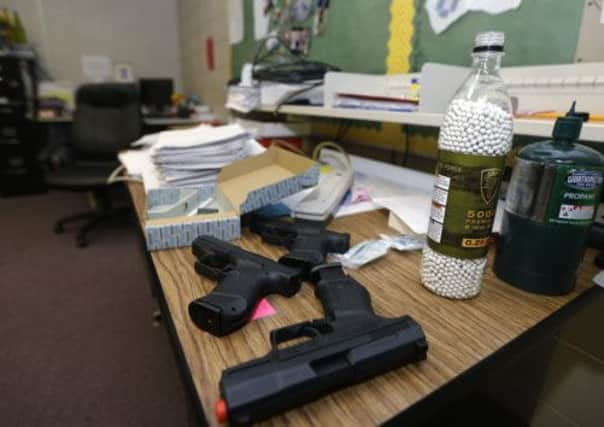USA: School teachers carrying guns as school begins


After a school shooting in Connecticut last December that left 20 children and six teachers dead, the idea of arming schools against gunmen was hotly debated across the United States.
The National Rifle Association declared it the best response to serious threats. But even in the most conservative states, the majority of proposals faltered in the face of resistance from teachers themselves or warnings from insurance companies that schools would face higher premiums. But, making use of a little-known Arkansas law that allows armed security guards on campus, Mr Dougan and other teachers at the school will be considered guards.
Advertisement
Hide AdAdvertisement
Hide Ad“The plan we’ve been given in the past is ‘Well, lock your doors, turn off your lights and hope for the best’,” said school superintendent David Hopkins. But as deadly incidents continued to happen in schools, he said, the district decided “that’s not a plan”.
In strongly conservative Arkansas, where gun laws are permissive and ownership is common, no school district had ever used the law to arm teachers on the job, according to the state Department of Education. The closest was the Lake Hamilton School, which for years has kept several guns locked up in case of emergency. Only a handful of trained administrators – not teachers – have access to them.
Clarksville, a community of 9,200 people about 100 miles north-west of Little Rock, is going further.
Home to an annual peach festival, the town is not known for having dangerous schools. But Mr Hopkins said he faced a flood of calls from parents worried about safety after the attack last year at the Sandy Hook elementary school in Newtown, Connecticut.
Mr Hopkins said he and other school leaders saw no reason for the district not to rely on its own staff and teachers to protect students rather than hire someone. State officials are not blocking Clarksville’s plan, but Arkansas education commissioner Tom Kimbrell is opposed to the idea of arming teachers and staff.
There are also other dissenters. Donna Morey, former president of the Arkansas Education Association, called the idea of arming teachers “awful”. The risk of a student accidentally getting shot or obtaining a gun outweighs any benefits, she said. “Educators should be in the business of educating students, not carrying a weapon.”
Participants in the programme are given a one-off $1,100 (£725) stipend to purchase a handgun and holster. Mr Hopkins said the district was paying about $50,000 for ammunition and for training that is tailored for teachers to respond to gunmen on campus.
Sydney Whitkanack, who will enter seventh grade this autumn, said she has grown up around firearms and does not mind if teachers or staff at the school are armed.
Advertisement
Hide AdAdvertisement
Hide Ad“If they’re concealed, then it’s no big deal,” she said. “It’s not like someone’s going to know ‘Oh, they have a firearm’.”
The district will post signs at each school about the armed guards, but the identities of faculty and staff carrying weapons will be kept secret, Mr Hopkins said. Those who participate in the programme will continue to receive regular training, he said.
Sherry Wommack cited the programme as one reason for taking her son, an incoming eighth-grader, out of Clarksville’s schools before the school year begins. Ms Wommack does not believe that teachers should make life-or-death choices involving students.
“I think police officers are trained to make those decisions, not teachers,” she said.